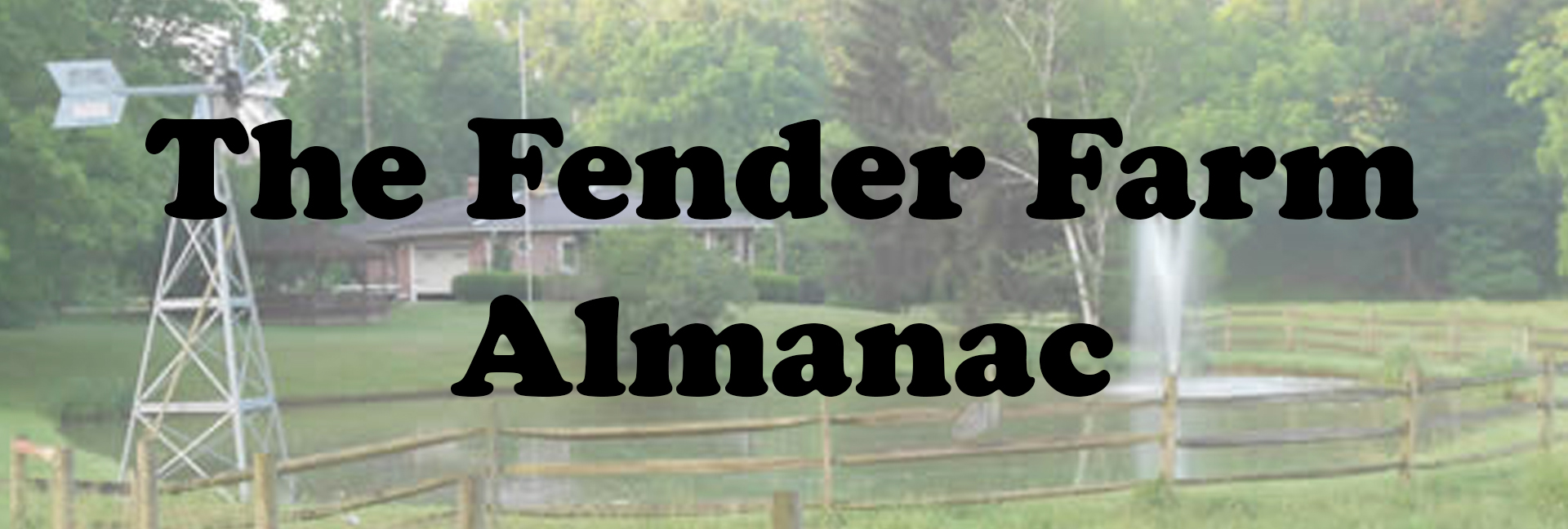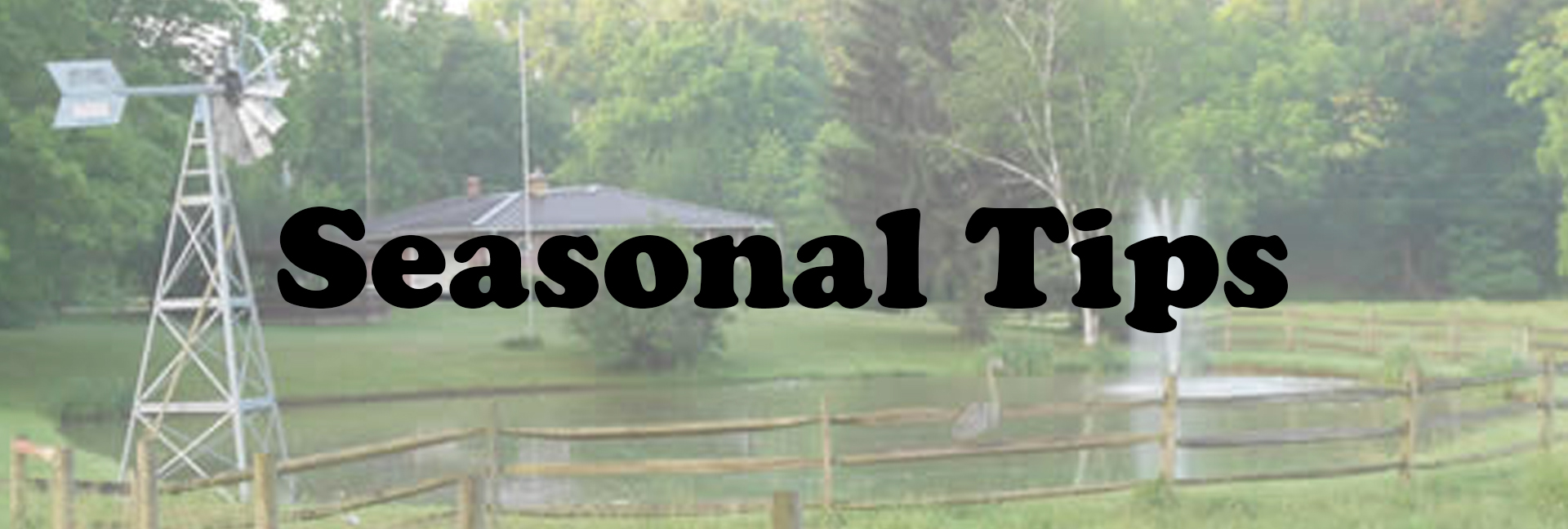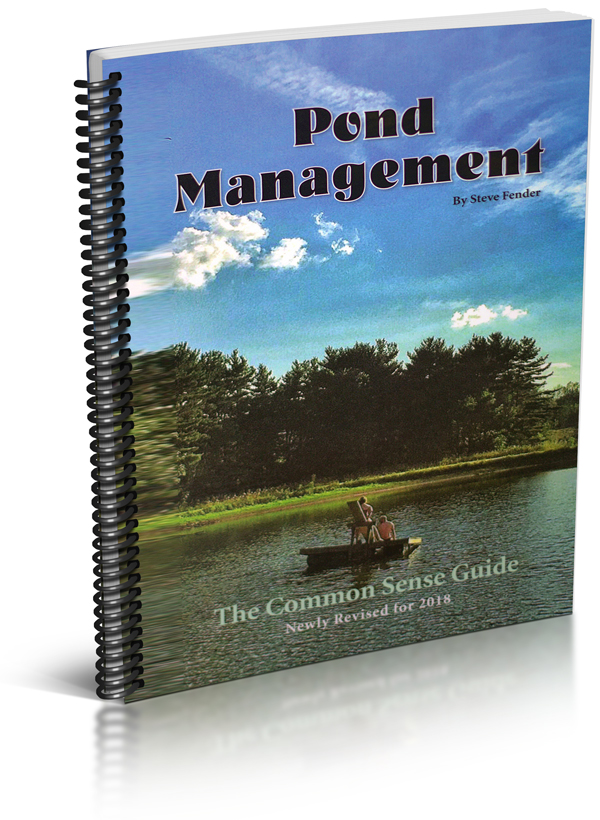
The 2019 Year
INTRODUCTION
We originally wrote this for the 2016 year, but 2019 is shaping up to be about the same, so look for a lot of history to repeat itself from three years ago.
This past winter, it was so warm that we didn’t have a good ice cover and snow cover. This meant that the algae never quite died off like it typically does in Ohio winters. So then this spring, we already had a growth of algae started where normally there would be none, so when it warmed up, it really took off. I got a lot more phone calls than usual from our customers that were having algae problems, so we had more of an issue with the vegetation because it was a mild winter. Also along with that, another thing I had a concern with this winter is I noticed that the fish weren’t going into dormancy quite like they should – this added a bit of a stress factor, especially to the blue gill, so we had customers with more bacterial gill disease than what we had in the past. Those are a few of the issues we had this past year.
When someone calls with a case of bacterial gill disease, I tell them to use copper sulfate. So it’s something customers need to watch over, if they see evidence of blue gill getting sick or dying or getting fungus on them in the first part of the spring, they need to be diligent and treat that with a little bit of copper sulfate, maybe even call the hatchery here first and get some advice on how to combat that.
With algae, something new we tried this year at the hatchery is tilapia that we got in this spring. Most people have had tilapia to eat at a restaurant, and some veteran fish farmers know that they are a tropical fish that doesn’t really take to our harsh Ohio winters. There’s a few reasons we stocked them this year. The main reason I got into them is because a female tilapia of about 8 inches in size will drop about 100,000 eggs every three weeks. For that reason, they make a really good forage fish for the other fish, it gives the other fish a lot to eat. Another advantage is these little tilapias and the adult tilapia like floating algae really well. Since we know they aren’t going to survive the winter, we can overstock them to the point that they become more effective much quicker than another algae fish might be. So when you stock 10-15 pounds of these tilapia per acre in the spring of the year, then until they’ve been there for 2 or 3 weeks they begin to knock the algae back a lot and they soon get ahead of it and really clean the ponds up. At the end of the season, before it gets too cold, it’s a good idea to try and catch them out. They will bite on a worm, so if you try to get them caught out, you’ll have a really good eating fish to file out and eat.
Another problem we ran into this summer is in the month of August it got so terribly hot and dry – we were on the verge of breaking records temperature and drought wise – with these kinds of conditions come oxygen depletion, and when you get these kinds of conditions in the older ponds, the algae plankton bloom will get to growing a little too heavily. When it gets dense like that, if it dies too quickly, the decaying process will take the oxygen out of the water. I had quite a few phone calls for 2 or 3 weeks through the month of August, customers calling and asking why their fish would be dying like they were. That’s another issue we have, and this is more towards your older ponds than the new ponds – the older ponds are more prone to have these issues because of the fertility rates.
So the way you fight that, and you need to be proactive with it, is bottom aeration, using the air stones and an air pump, windmill generated or electric over air, and the air stones in the bottom of the pond help turn the pond over very slowly. This helps to get rid of the stratified layers of water, knocking the nutrient load down by getting rid of the gasses that are forming from the decaying plant matter, helping to turn the pond over very slowly. Also, we’ve been selling these bacteria for quite some time now, almost a decade, and the bacteria breaks down all of the black muck in the bottom of the pond. Fish manure, dead fish, duck manure, and the like makes a lot of black muck in the bottom of the pond. By using the bacteria, you break that down, which in turn starves out the vegetation – more or less defertilizing the pond – so your vegetation can’t grow prolifically, and if it isn’t as dense, then it can’t die in such volume that it takes the oxygen out of the water. Using aeration and bacteria is something I feel is necessary for new ponds, old ponds, what have you. Old ponds need to have it to reverse the process that is already going on, and the new ponds need it to prevent it from coming on.
We’re coming into the fall weather now, bringing you up to date, and starting off with some cool temperatures here in Ohio. As we get into cooler temps, people are starting to restock, like stocking in minnows as feed for the coming winter months, or they have a new pond that is just filled up that they want to stock to begin with, or even as the water gets colder a lot of people will restock fingerling fish, certain species that just aren’t keeping up with reproduction of the fish. We will also start running trout here as soon as winter cools off a little bit more, and when we get into late October and early November, we will get into walleye, pike and musky, and that will finish the season out for Ohio.

September
As we get into the cooler temperatures, it is getting time to restock for a variety of reasons. You may want to restock minnows as feed for the winter months, stock a new pond you just built, or restock fingerling fish. As soon as it cools off, the hatchery will be running trout, so give us a call to find out more specific stock dates.
October – November
If your pond stays too warm to support trout in the summer, this is a great time to stock it. We sell 10-12″ trout. Put them in this fall and catch them out by next June. If you don’t stock trout, warm water fish like bluegill and catfish are slowing down on pellet feeding, so store your feed in a cold, dry place for next spring. It is also a good idea to stock feeder minnows, if you didn’t already do it in September. It gives the adult fish something easy to catch and eat throughout the winter. This is a good time to consider aeration if you don’t already have something in your water. We sell windmills, pumps, and fountains that will aerate the water and help prevent winter kills. This is also the season for wallete, pike and tiger muskies – call in for estimated stock dates, price and availability.
If you need some good reading this winter, check out Pond Management – The Common Sense Guide, by Steve Fender.
In this book, Steve covers the most helpful aspects of farm pond and lake management, including:
- Stocking recommendations
- Fish under cover and feeding your fish
- A fish biography
- Spawning habits of frogs and fish
- Aeration and oxygen
- Your pond and wildlife
- Predatory birds and animals
- Weed identification and control
- Pond construction
- Muskrats and beavers
- Fertility control
- Pond Q&A
- Recipes
- Fishing Notes
- Stocking Notes
- …And much more
This book is a gold mine for any new or veteran pond stocker and will help you keep your fish happy and healthy all season long.


